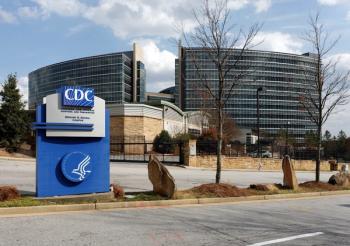
Navigating health literacy and its impact on patient experience
How physicians can shape health literacy in a TikTok world.
We live in a state of information overload with facts and opinions coming at us from all directions – peer interactions, family views, and traditional and social media. It’s relentless. If you were to ask three people where they got their information about a particular topic, you’d likely receive three different sources or three different combinations of sources.
It’s up to each person to weigh the credibility of each of those sources, but the way we each do that is very different. This is certainly true in health care, and it’s more evident than ever that physicians and other clinicians need to be cognizant of this as they counsel patients.
Experts are raising concerns that health literacy is an often unrecognized, increasingly problematic,
In fact, the Johns Hopkins Center for Health Equity is noting how
Clearly, health literacy plays a critical role in health outcomes, but it is also important to recognize its role on a patient’s experience.
Identifying health literacy
In traditional, fast-paced health care settings, it may be difficult to determine the level of health literacy a patient presents with. But it’s imperative that physicians use their time with the patient to detect clues to whether the patient fully understands the clinical advice they are given.
How? Start with the patient’s chart. There may be helpful clues that guide you on how to best communicate with the patient about health information. These clues may come from their health history – compliance with treatment or lifestyle adjustments, or engagement with follow-up appointments and referrals. Additionally, providers can identify the patient’s preferred language or need for sign language ahead of a visit and be prepared with an interpreter.
From there, context clues while talking with the patient may open the door to asking the patient more direct questions that show their level of understanding. Speak with clear, deliberate communication until you determine a patient’s comfortability with the information you are providing. No two patients are the same, but the number one thing a physician should remember is to meet the patient where they’re at.
Using open communication and talking at the patient’s level of understanding is key to gaining their trust and comfortability, and, ultimately, achieving better health outcomes.
Focus on the experience
As providers, we’ve surely all been on the receiving end of someone’s negative experience; however, it’s often due to miscommunication or the perception of an unengaged physician. Health literacy can impact patient experience if a person leaves an appointment without a clear understanding of the path to move forward. Physicians and other clinicians often report feelings of burnout due to the sheer number of tasks they need to accomplish with each patient, but small changes in communication style can create a better member and provider experience.
In my role as vice president of health equity and medical informatics at Premise Health, I am committed to providing the tools and time our physicians and clinicians need to create trusted relationships with patients. Health equity is embedded in our culture and ingrained in how we deliver care. We are committed to identifying barriers and helping our members overcome them to achieve their healthiest lives.
Despite spending more on health care than any other country in the world, the United States continues to see some of the poorest health outcomes and an obvious state of emergency in traditional primary care, largely due to alarming workforce shortages and decreased access to care. Physicians are challenged to simply spend an appropriate amount of time with patients, but there are simple things you can do to make in impact on health equity in a short time.
One option is to provide validated tools ahead of time so that you have an idea of a patient’s literacy level before the conversation progresses. I like this tool from
Then, when you’re communicating important diagnosis or treatment information to the patient, use the teach back method to confirm understanding. Ask the patient to repeat the instructions you provided in their words, which allows you the opportunity to correct any misunderstandings.
Finally, don’t forget that you are part of a broader health care team. Encourage patients to ask questions of not only you, but the nurses and other medical professionals in your office. Remind them that pharmacists are a valuable resource for questions about medication.
We also encourage our health center staff to educate patients about
Small steps make a big impact
Health literacy is an issue we all need to be concerned with. The Center for Health Care Strategies reports that
Maria Romano, MBA, MSN, NP-C, is vice president of health equity and medical informatics at
Newsletter
Stay informed and empowered with Medical Economics enewsletter, delivering expert insights, financial strategies, practice management tips and technology trends — tailored for today’s physicians.















